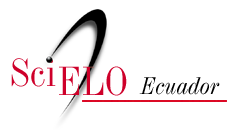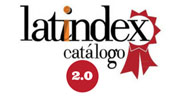Estructura de Gestión basada en el proceso S&OP: Estudio de caso en una industria cosmética Brasileña
DOI:
https://doi.org/10.29019/enfoqueute.v5n1.32Palabras clave:
Proceso S&OP, Gestión empresarial, Diferencial competitivo, Colaboración, Cadena de SuministrosResumen
(Recibido: 2014/01/31 - Aceptado: 2014/03/25)
El articulo trata de la generación de una estructura de gestión empresarial basada en el Proceso S&OP en una industria cosmética Brasileña. El creciente énfasis del desarrollo empresarial, guiado por la búsqueda de la atención a las necesidades y exigencias de los clientes está haciendo que organizaciones de todos los sectores trabajen en la creación de un diferencial competitivo. La estrategia de gestión empresarial colaborativa S&OP atrae cada vez más la mirada de los interesados que buscan potencializar sus prácticas para alcanzar este diferencial. Con la metodología estudio de caso se busca conocer, identificar y analizar las características de la empresa, usando múltiples herramientas de análisis (SWOT, Análisis de procesos, Cadena de valor) a fin de proponer una herramienta de gestión con bases sólidas que se ajuste a las necesidades y objetivos propios de la organización. Los resultados demostraron que los principios de colaboración y comunicación internas son los pilares fundamentales frente a cualquier intento por el desarrollo empresarial; esto sustenta la propuesta de una estructura de gestión basada en los cinco pasos del Proceso S&OP; como complemento al estudio se identifica al modelo CPFR como plataforma para un trabajo integrado con las demás empresas de la Cadena de Suministros.
Descargas
Publicado
Número
Sección
Licencia
Los autores retienen todos sus derechos (© copyright).
- Los autores retienen sus derechos de marca y patente, y también sobre cualquier proceso o procedimiento descrito en el artículo.
- Los autores retienen el derecho de compartir, copiar, distribuir, ejecutar y comunicar públicamente el artículo publicado en Enfoque UTE (por ejemplo, colocarlo en un repositorio institucional o publicarlo en un libro), siempre que se dé el reconocimiento de su publicación inicial en la revista Enfoque UTE.
- Los autores retienen el derecho a hacer una posterior publicación de su trabajo, de utilizar el artículo o cualquier parte de aquel (por ejemplo: una compilación de sus trabajos, notas para conferencias, tesis, o para un libro), siempre que indiquen la fuente de publicación (autores del trabajo, revista, volumen, número y fecha).
























